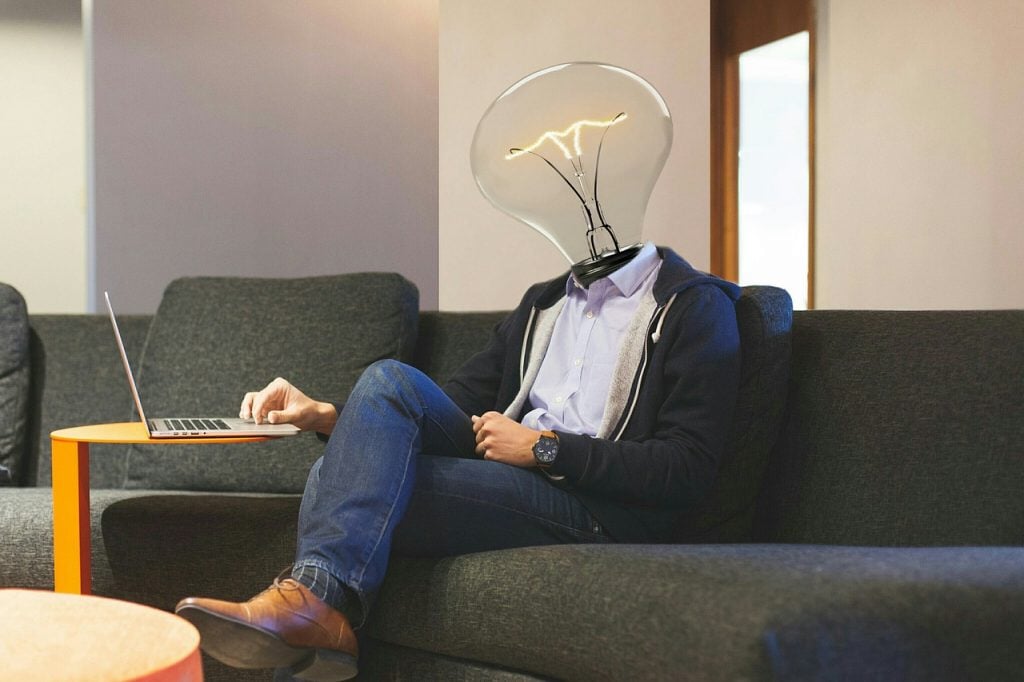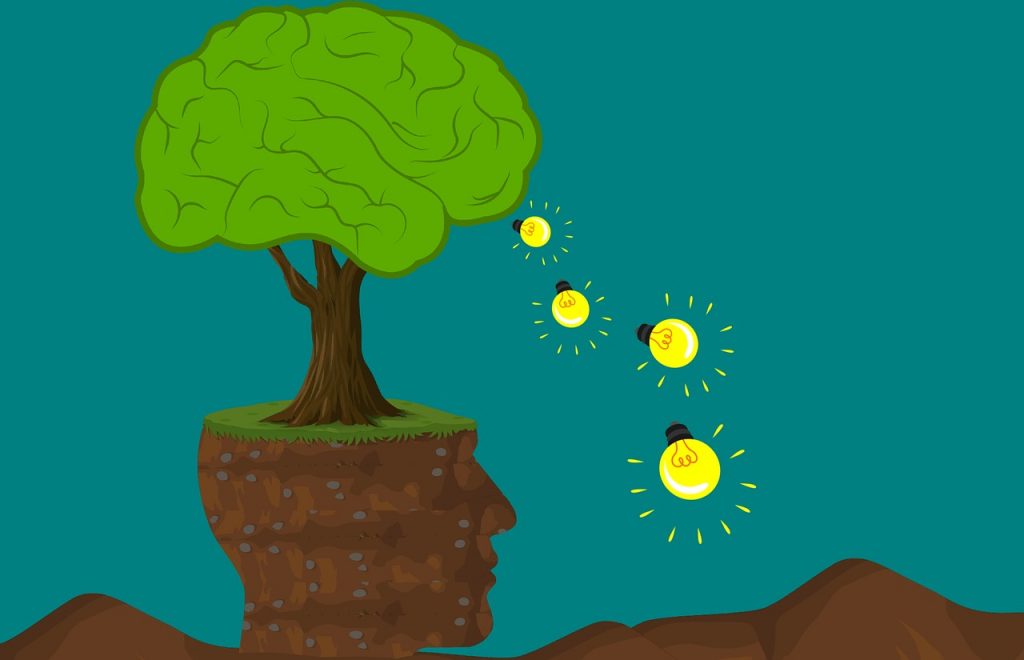This post about how to fix communications issues in the workplace is by Zachary Amos,…
The Biggest Problem With Problem Solving
Kim’s friend Jeremy Utley has been writing about remaining cognitively open. He is sharing some early thoughts with us in the post below. He’s a director and adjunct professor at the Stanford d.school, where he leads executive education, leadership development, and the LaunchPad accelerator.
His ideas about how to remain cognitively open feel very relevant to the work we are doing at Radical Candor. Jony Ive offered some wisdom about the creative process. “While ideas ultimately can be so powerful, they begin as fragile, barely formed thoughts, so easily missed, so easily compromised, so easily just squished.”
But how, exactly, can you avoid the problem of squishing new ideas — either your own or other people’s? Utley offers some great advice about how to stay cognitively open so that you don’t kill new ideas too early. Remaining cognitively open is crucial to innovation — and also to being open to feedback.
The Problem With Problem Solving

Following a whirlwind tour of duty in innovation centers around the world, my friend Philippe Barreaud leads Michelin’s Customer Lab for North America, Asia, and Europe. You might be thinking: “Ooh… A fancy customer innovation lab! It must be all about launching new things! Shiny objects! Killer apps! Et cetera!!”
But no. As he tells the story, “One of the core values we provide to the organization is not killer ideas, but killing ideas.” Philippe and his team often help teams decide to not invest in a particular direction, and this is great because it saves the company a ton of money.
Philippe describes a familiar sequence of events: leaders across the business bring him their “billion-dollar post it.”
Hoping for some innovation validation before investing; the innovation team convincingly demonstrates that the idea should not be pursued, and encourages leaders to move on to the next idea; leader genuinely appreciates the valuable savings his “idea killing service” provides; leader admits a problem: “That was our only post-it.”
This is a problem we’ve seen across geographies and industries at the Stanford d.school, where I lead Executive Education. Organizations routinely under-fill their funnel. You’ve probably been in one of those painful brainstorming meetings that are mostly crickets, chirping uncomfortably in the silence. One recent study pegs the average brainstorm at generating just two ideas!
There’s a psychological bias at play here: one of the most distressing phenomena we encounter as human beings is unresolved problems. Because of our deep-seated psychological aversion toward ambiguity, we seek what social psychologist Arie Kruglanski dubbed “cognitive closure” as quickly as possible.
That’s right: even though we long to be open-minded, the truth is, we’re constantly pulled toward closed-mindedness. This tendency to move past the discomfort of the unknown results in suboptimal outcomes, especially when it comes to generating novel solutions to problems.
The problems we face demand fresh, imaginative thinking. But how do we get there? How to remain open-minded when the temptation to close our minds is so strong and so ubiquitous?
It’s as simple as making four counterintuitive choices.
Choose Not to Solve The Problem
The first choice is to decide to leave a problem unresolved. Soviet psychologist Bluma Zeignarik demonstrated in the 1920s that, when a task is considered “complete,” a question “answered,” or a problem “resolved,” folks’ minds move on and they stop searching for solutions. Out of sight, out of mind.
If the problem is left unfinished, though, the subconscious continues to work on finding a solution, even while we’re attending to other things. This is true of mundane tasks, and it’s true even of our sleep. German psychologist Ullrich Wagner showed that “sleeping on a problem” doubles the likelihood of solving it.
But here’s the catch: it only works if the puzzle is left unsolved. You have to tell yourself you’re not finished solving the problem yet, even amidst the productivity and efficiency obsession of the day. Creativity is inherently inefficient.
In one of the most famous studies of creativity ever conducted, Donald MacKinnon found that what distinguished the most creative professionals from the pack was their willingness to delay decisions as long as possible. Their ability to forestall cognitive closure gave them the ability to remain open to new ideas, and new inspiration, which resulted in celebrated work.
Choose to Generate Alternatives
Next, even if you think you’ve discovered a solution to the problem you’re facing, force yourself to generate alternatives. One simple way to do this is to impose an “idea quota” upon yourself. An idea quota is an arbitrary numerical goal you enforce for generating options before making decisions.
You’ve got a problem, and you think up a solution. Now push yourself: what are other ways to solve the problem? How might a child do it? How might a playwright? How might Amazon, or Nike, or Apple? Push yourself to generate many more options, even after you’ve got one you like.
The truth is, our creativity doesn’t drop off nearly as quickly as we fear it will, a misconception that researchers have called “the creative cliff illusion”. The greater danger is that we leave entire swaths of the region of possibility entirely unexplored due to premature closure.
Another way to generate new ideas is to have what Kim Scott in Radical Candor calls debate-and-decide meetings (read more about this process in chapter 8 of Radical Candor).
“You have to listen to the ideas that people on your team have and create a culture in which they listen to each other. Next, you have to create space in which ideas can be sharpened and clarified, to make sure these ideas don’t get crushed before everyone fully understands their potential usefulness,” Kim writes. “Just because an idea is easy to understand doesn’t mean it’s a good one. You have to debate ideas and test them more rigorously. Then you need to decide — quickly, but not too quickly.”
Choose Multiple Ideas

Next, once you generate more ideas than you need, choose to select more than one idea to bring forward into viability assessment. The natural instinct to select a “winner” is dangerous, as the value of any new idea cannot be empirically deduced without action. There’s good evidence that we are bad at assessing our own ideas and routinely fail to select the one with the highest potential.
Since you don’t know which idea is best, you can increase your likelihood of success by choosing more than one.
One of the most popular methods to develop desirable software is known as A/B testing. A developer tests a couple of competing options against a predetermined outcome variable (click through, share, open rate, etc) in parallel, where learning happens more rapidly.
But here’s the thing: An A/B test requires a B!
In many cases — especially in large organizations, like the Michelin example above — there is no “B.” There’s only one “billion-dollar post-it.”
Even if alternative directions were considered, the org bias is to unnecessarily eliminate alternatives and choose one direction to pursue. There’s no reason to arbitrarily choose a winner at the early stages.
At the very least choose a runner-up, and do a small-scale experiment before declaring a “grand prize” winner.
Choose To Improve
Last, the fundamental mindset we advocate at the d.school is one of mindful improvement. Every problem is an opportunity to practice these counterintuitive choices and reinforce new ways of working.
Just as a high school athlete sees possibility in the most mundane activities — every jug of milk is a dumbbell when unloading the groceries — an innovator-in-training is always looking for opportunities to flex their creative muscles.
At the d.school, we believe that such mindsets can be practiced and that even “off-season training” improves the ability to perform when the game is on.
Routinely committing to make the three choices above — beyond increasing the likelihood of success in this particular endeavor — has the added benefit of boosting your ability to resist cognitive closure. You’re building mental muscles by training your conscious mind to continue the search a bit longer than is normally comfortable.
These mindsets can be learned, and learning them improves innovation outcomes.
*As a book nerd who studies the history of invention and discovery, Jeremy shares insights on the art and science of creative practice daily at jeremyultey.design. Subscribe and/or follow!
————————————————————————————————————————————————————————————–
Sign up for our Radical Candor email newsletter >>
Need help practicing Radical Candor? Then you need The Feedback Loop (think Groundhog Day meets The Office), a 5-episode workplace comedy series starring David Alan Grier that brings to life Radical Candor’s simple framework for navigating candid conversations.
You’ll get an hour of hilarious content about a team whose feedback fails are costing them business; improv-inspired exercises to teach everyone the skills they need to work better together, and after-episode action plans you can put into practice immediately to up your helpful feedback EQ.
We’re offering Radical Candor readers 10% off the self-paced e-course. Follow this link and enter the promo code FEEDBACK at checkout.



